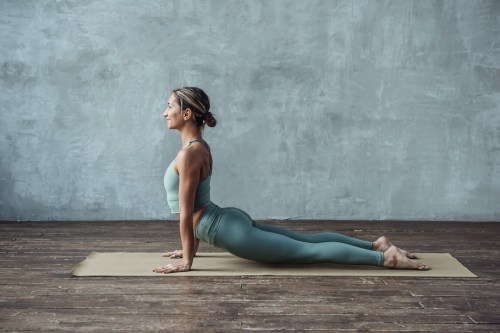Whether you prefer the “hot girl” variety, a morning stroll for your mental health, strutting on a treadmill, or powering through a few minutes on your lunch break, by now you are probably well aware of the many benefits of walking: It’s good for your heart and lungs, brain, mood, and longevity, among other things.
Experts in This Article
Noel Bairey Merz, MD, is the director of the Barbra Streisand Women’s Heart Center in the Smidt Heart Institute at Cedars-Sinai in Los Angeles.
clinical cardiologist at the Cleveland Clinic
But although it’s very clear why you should walk, there’s still a big question regarding the best way to go about it: Are short or long walks better for you?
For example, how does getting up from your desk every hour to take a quick stroll around the block compare to carving out one chunk of time at the beginning or end of your day to walk a few miles?
In general, all walking is good for you, so there’s really no right or wrong answer. “The most important thing here is to move,” says Tamanna Singh, MD, FACC, co-director of the Sports Cardiology Center at Cleveland Clinic. “Movement—whether it be short or long—will inherently precipitate a cascade effect of cardiovascular benefit: blood pressure control, blood sugar management, cholesterol reduction, weight management, reduction in cardiovascular risk overall, and importantly, improved mental health.”
But short and long walks each offer different benefits. Before choosing one or the other, it helps to consider your general fitness level and goals.
If you’re primary focus is meeting your physical activity goals
For adults whose main reason for walking is to hit their aerobic exercise minimums for the week—“the American Heart Association currently recommends 150 minutes of moderate-intensity or 75 minutes of high-intensity aerobic exercise per week, or a combination,” Dr. Singh says—one of the simplest ways to figure out whether short or long walks are better for you is by using what Dr. Singh calls the exercise dose equation: exercise duration x frequency x intensity.
“Changing any of the variables may lead to the same exercise dose, so short, more frequent walks can be as beneficial as one longer walk,” she says. “For instance, three short walks that are 15 minutes in duration, may give you the same benefit as one 45-minute walk [at the same intensity]. You could also walk at a higher intensity for 15 minutes and have a comparable benefit to a slower 30 minute walk.”
If you’re trying to build endurance
Endurance is important to your overall cardiorespiratory fitness—meaning the health of your heart, lungs, and circulatory system. What’s more, having good endurance can help reduce your risk of chronic illnesses like heart disease and diabetes. The good news is, if this is your goal, you’ve got options.
“If you’re looking to improve aerobic fitness (aka endurance), then lower intensity, longer duration aerobic efforts will help by increasing mitochondrial density and subsequently energy for your working muscles,” Dr. Singh says. Mitochondria are essentially the battery packs of your cells. Science shows that their density almost perfectly mirrors maximum oxygen uptake (Vo2 max), meaning the more dense your mitochondria, the more energy you have to power your muscles for longer.
But long-distance walking isn’t the only way to supercharge your mitochondria. Recent research finds that quick doses of high-intensity cardio can also accomplish this by giving your mitochondria an immediate boost, while also helping them stay more fully charged long-term, as well as increasing your Vo2 max. Plus, you can increase your cardiorespiratory fitness with as little as 17 minutes of power walking per day, according to another recent study.
For those who choose to take the shorter, more-intense route, Noel Bairey Merz, MD, director of the Barbra Streisand Women’s Heart Center in the Smidt Heart Institute at Cedars-Sinai in Los Angeles, recommends interval training. “Short, two-minute, more intense walking interspersed with short, two-minute, less intense walking for five to 10 cycles can provide aerobic fitness conditioning similar to jogging for longer,” she says.
The intense intervals should be fast enough to raise your heart rate (you can gauge this with the heart rate monitor on your smart watch or by using the talk test), while the slower, recovery rounds should be closer to your baseline heart rate. Just be extra mindful of your movements as you increase your speed. “If you’re doing short bursts of effort at high intensity, there is greater risk of musculoskeletal injury so be cognizant of ensuring dynamic warmups and cooldowns to reduce risk,” Dr. Singh says.
A bonus: This strategy can be easier on your body than long, sustained strolls. “Shorter walks with rest in between can be better for your joints,” Dr. Bairey Merz says.
If you’re trying to create a new exercise habit
Walking is a great gateway workout when you’re trying to start (or become consistent with) a fitness routine because it’s relatively accessible and requires minimal equipment—really just a pair of walking shoes. While Dr. Singh says you should consult with a doctor before starting any new physical activity, once you have the green light, she recommends opting for shorter, more frequent walks to help reinforce the new behavior.
“Oftentimes, it is easier to carve out a shorter amount of time more frequently in a week than one much longer period of exercise,” she says. “In fact, you may find that the more frequently you exercise, the easier it is to build a habit—you may also find that your muscles feel less stiff due to increased frequency.”
That is the long (and short) of it, but the main takeaway is to move your body in whatever way works for you and your schedule.
Sign Up for Our Daily Newsletter
Get all the latest in wellness, trends, food, fitness, beauty, and more delivered right to your inbox.
Got it, you've been added to our email list.











